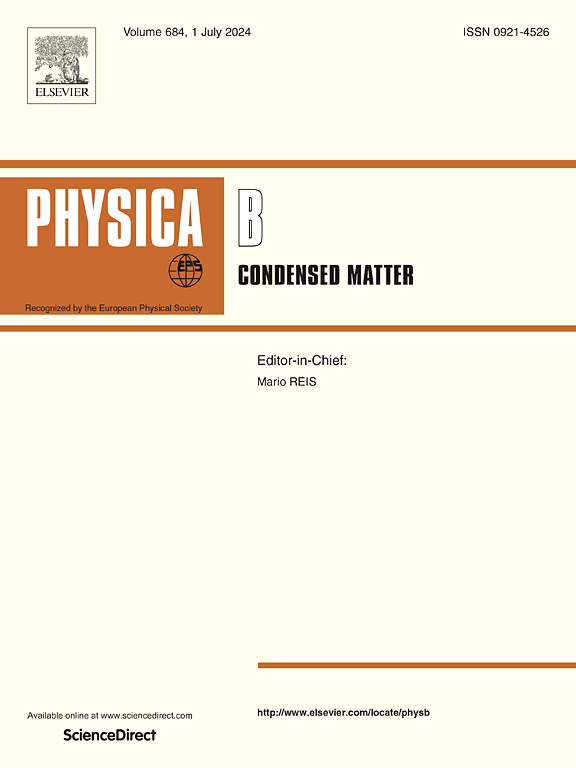IF 2.8
3区 物理与天体物理
Q2 PHYSICS, CONDENSED MATTER
引用次数: 0
摘要
本研究报告了掺入不同浓度的石墨烯氧化物(GO)对 La1.85Sr0.15CuO4(LSCO)超导体的结构、电学、磁学和磁通钉凝特性的影响。采用固态反应路线制备了 LSCO + x 重量百分比的 GO(x = 0.0,0.1,0.3,0.5,1.0)复合材料。XRD 分析表明,复合材料中 LSCO 的四方晶体结构未受影响。据观察,临界温度(Tczero)随着 GO 浓度的增加而迅速降低。与纯 LSCO 相比,LSCO-GO 复合材料的临界电流密度(Jc)和针刺力密度(Fp)都有所提高,这是因为添加了 GO 后产生了人工针刺中心。添加 0.3 wt % GO 的复合材料在 5 K 时的 Jc(∼1.91 倍)和 Fp(∼2.67 倍)增强幅度最大。利用 Fp(H) 数据探究了样品中的引脚性质。本文章由计算机程序翻译,如有差异,请以英文原文为准。
Improved flux pinning properties of Graphene Oxide blended La1.85Sr0.15CuO4 (LSCO) superconductor
In this study, the effect of blending various concentrations of Graphene Oxide (GO) on the structural, electrical, magnetic and flux pinning properties of the La1.85Sr0.15CuO4 (LSCO) superconductor is reported. LSCO + x wt. % GO (x = 0.0,0.1,0.3,0.5,1.0) composites have been prepared using the solid-state reaction route. XRD analysis shows that the tetragonal crystal structure of LSCO is unaffected in the composites. It has been observed that the critical temperature () is reduced rapidly with increasing concentration of GO. The critical current density () and pinning force density () are enhanced for the LSCO-GO composites compared to pure LSCO, which is attributed to the creation of artificial pinning centres due to the addition of GO. The enhancement in (∼1.91 times) and (∼2.67 times) at 5 K has been found maximum for the 0.3 wt % GO-added composite. The nature of pinning in the samples has been probed using data.
求助全文
通过发布文献求助,成功后即可免费获取论文全文。
去求助
来源期刊

Physica B-condensed Matter
物理-物理:凝聚态物理
CiteScore
4.90
自引率
7.10%
发文量
703
审稿时长
44 days
期刊介绍:
Physica B: Condensed Matter comprises all condensed matter and material physics that involve theoretical, computational and experimental work.
Papers should contain further developments and a proper discussion on the physics of experimental or theoretical results in one of the following areas:
-Magnetism
-Materials physics
-Nanostructures and nanomaterials
-Optics and optical materials
-Quantum materials
-Semiconductors
-Strongly correlated systems
-Superconductivity
-Surfaces and interfaces
 求助内容:
求助内容: 应助结果提醒方式:
应助结果提醒方式:


